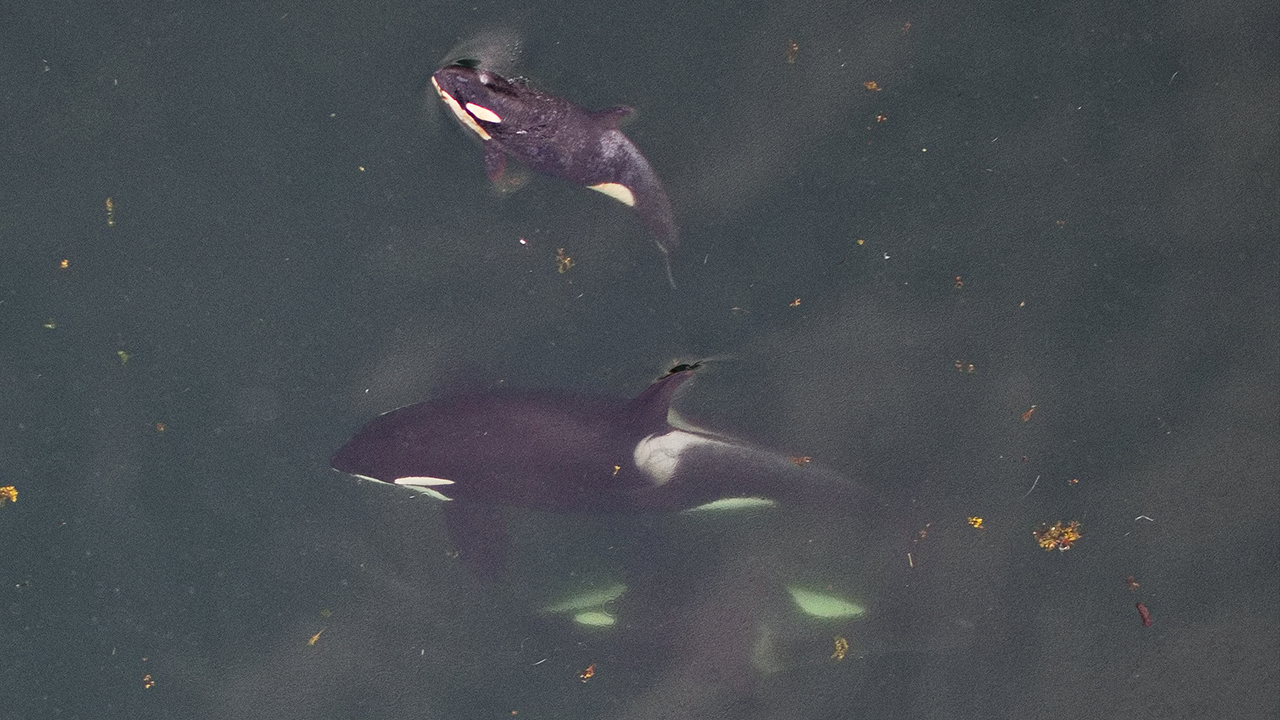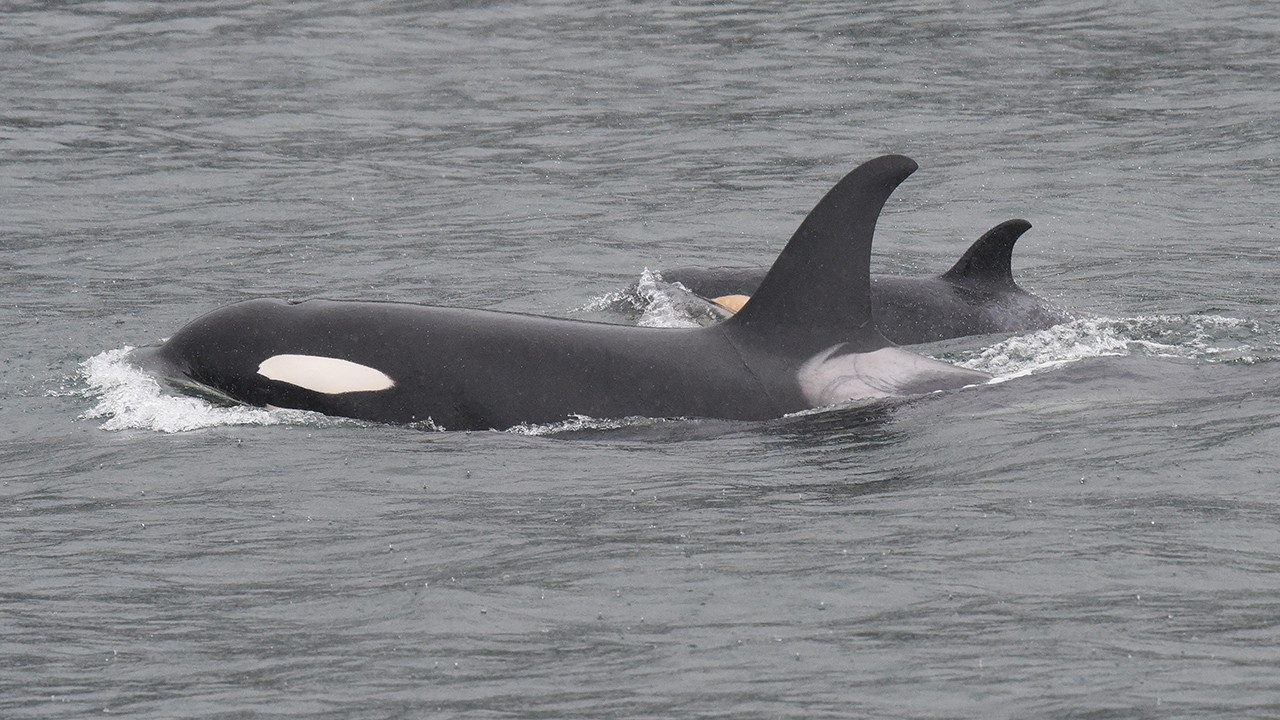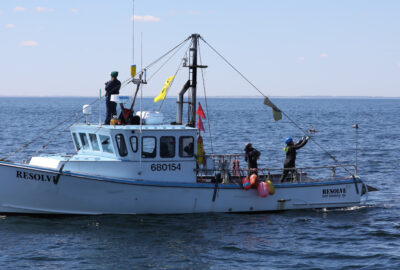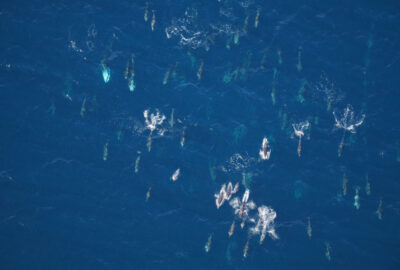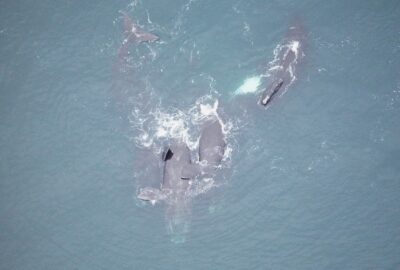Construction Update: As we enhance the look and feel of the Aquarium and make structural improvements to the penguin exhibit, some exhibits are temporarily closed, and the penguins are off exhibit until February 13. Learn more.
Taking Whale Science to New Heights
Long-term studies of two different species, on different coasts, highlight how climate change is affecting whales.
By New England Aquarium on Tuesday, September 02, 2025

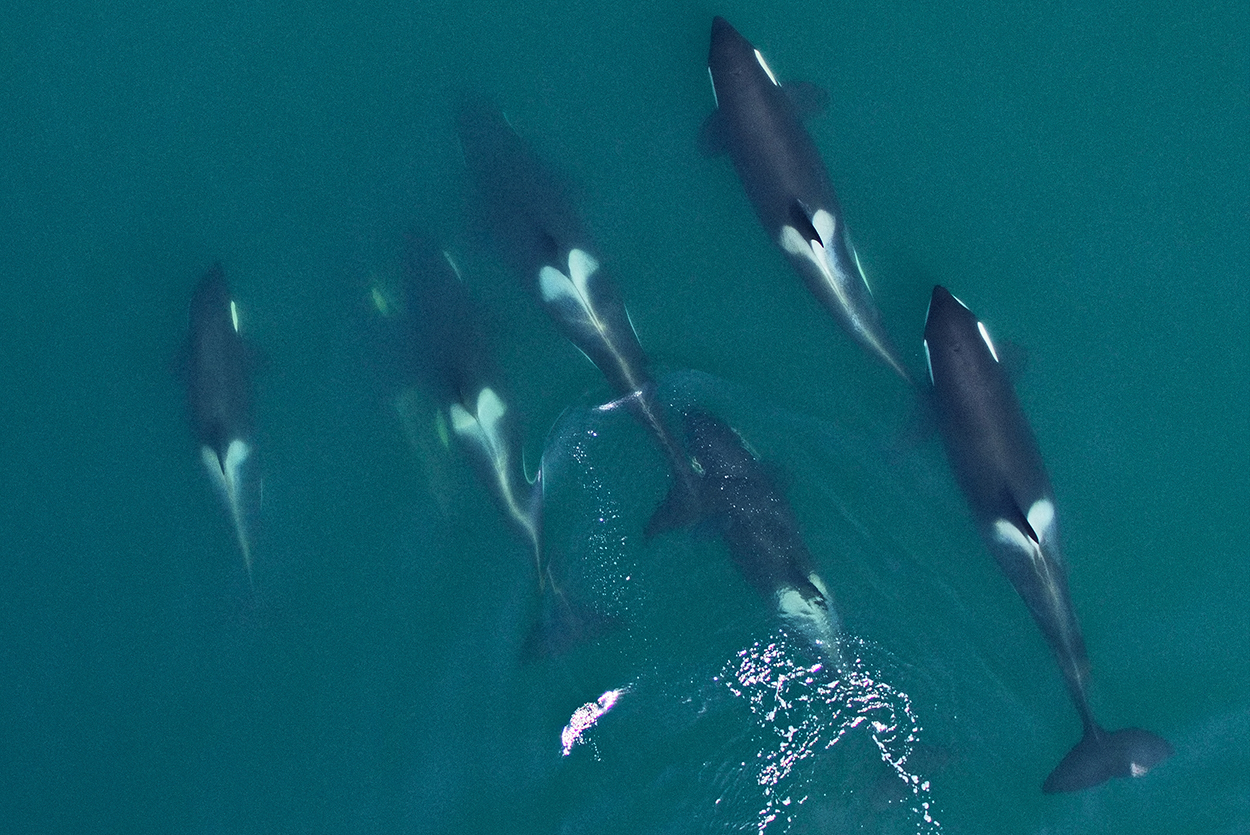
For two decades, Dr. John Durban has been using photogrammetry to study whales. The technique, which uses photos to collect body measurements, can help researchers better understand and monitor the health of individual whales—and help identify health trends in the overall population. Now a senior scientist and chair of the Spatial Ecology, Mapping, and Assessment (EcoMap) program at the New England Aquarium’s Anderson Cabot Center for Ocean Life, Durban is advancing the use of this non-invasive technique locally and further afield.
In Alaska, Durban has collaborated with the North Gulf Oceanic Society (NGOS) to research killer whales—also known as orcas—tracking populations in Prince William Sound and around Kenai Fjords National Park. For decades, NGOS has used photo-identification techniques—the same as those used by Anderson Cabot Center researchers in the management of the North Atlantic Right Whale Catalog—to count the whales and study the long-term effects on the population from the Exxon Valdez oil spill. With the addition of photogrammetry, scientists can now get a clearer picture of how major climactic events, including the “blob,” a marine heatwave which was first detected in 2013 and lasted until 2016, are also affecting their recovery.
/
Behind the research
“We can’t put a whale on a scale,” said Durban. “So, we had to figure out other means to learn about their health.” Photogrammetry is one of those means. An aerial photograph can give researchers a view of a cetacean’s entire body, an otherwise tricky feat when photographing such a large animal. Overlaying a scale onto that image, based on the altitude from which the picture was taken, lets researchers take actual measurements from the photo, capturing the animal’s body size. Those measurements offer important insights into its current health by measuring its body condition or “fatness,” and into its long-term health by measuring its length to determine if it is growing as expected. Combining photogrammetry with photo-ID can provide insight into health trajectories over time of the same recognizable individuals, and into the wellbeing of vulnerable sections of the population, such as growing calves.
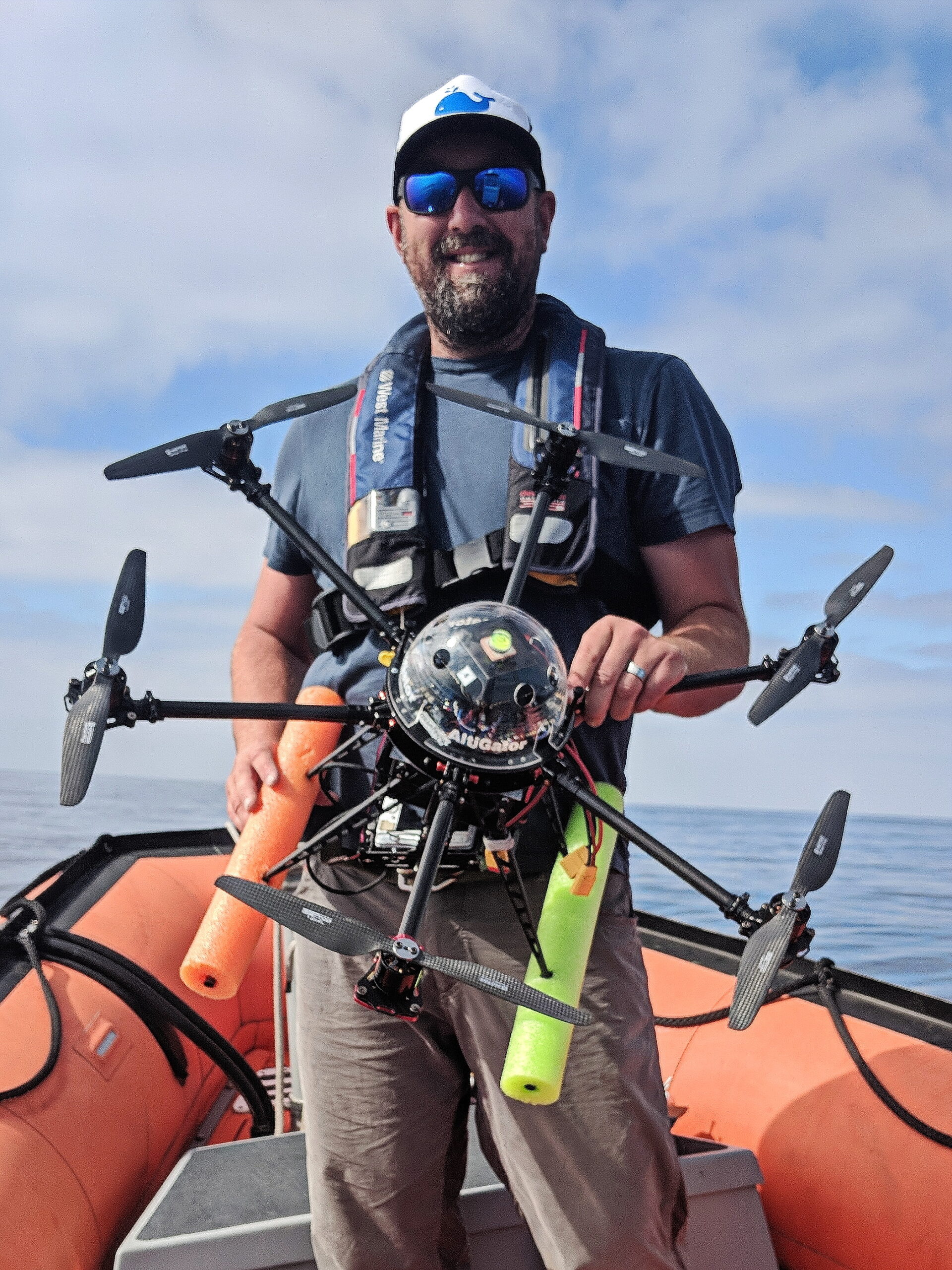
Durban has been conducting photogrammetry research since 2004. His early boat-based work utilized what he termed “laser metrics,” projecting a laser scale onto the whale from a camera. In 2008, Durban and collaborators first took to the air in a helicopter outfitted with special camera equipment, capturing their first overhead shots of killer whales. Today, Durban deploys a custom research drone, which he designed with colleagues from Aerial Imaging Solutions, a small company based in Connecticut. The research drones are “whisper-quiet” and can be flown above an animal unnoticed. “One of the things I still love about this science is it’s truly non-invasive,” he said. “We can give whales a health check without them ever knowing we are there.”
Fieldwork in Alaska
In June, Durban’s fieldwork in Alaska continued, with the Anderson Cabot Center’s aerial survey team lead, Orla O’Brien, joining the efforts. Along with longtime collaborators from NGOS, the team continued tracking the effects of the marine heatwave on killer whales in the region, which is hindering long-term recovery from the oil spill for some pods. They particularly hoped to capture potential pregnancies or spot new calves that are needed to recover the population.
Killer whale pods impacted by these events have been slow to rebound and are greatly affected by conditions in the ocean. Declining abundance of king salmon off the coast of Alaska, particularly during the heat wave, made it hard for the whales to find food. Some whales died during the heatwave, but the impacts on reproduction have been more prolonged, with subsequent years of poor calving due to the condition of the females. Any new calves sighted, and older calves surviving beyond their early years, is promising for the population.
“Killer whales only give birth to a handful of calves in their lifetimes, so documenting new calves and the growth of older ones is really important for population recovery,” Durban said.
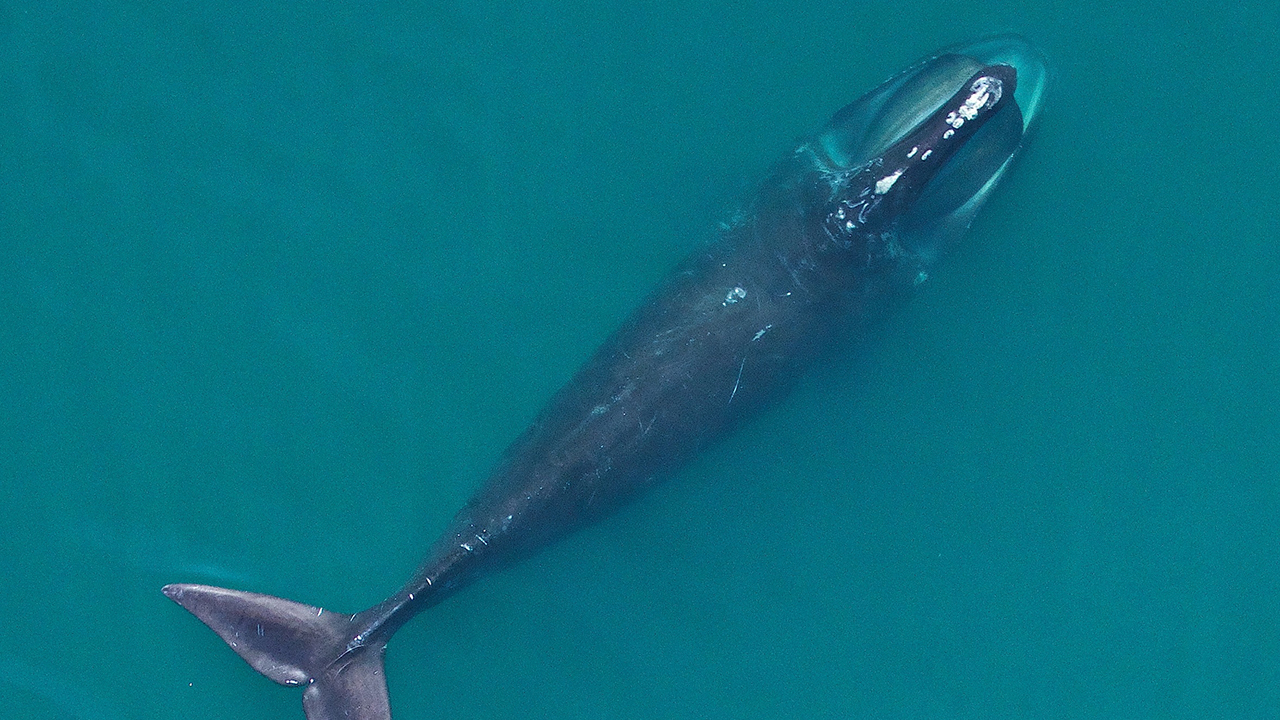
Climate change across coasts
Back on the East Coast, Anderson Cabot Center for Ocean Life researchers have been at the forefront of right whale research, also dating back to the 1980s. There are comparisons to make across these two long-term studies; our scientists have decades of population data of both species and can now use photogrammetry to get new insights.
“By looking at these animals, we can see how climate change is permeating through the whole ecosystem, and impacting it at different levels,” Durban said.
As top predators, impacts on killer whales show how climate change can upset the balance of the whole ecosystem, in this case through impacts on the salmon they eat. Right whales feed lower on the food chain, eating tiny zooplankton, but like the killer whales, are also experiencing increased pressures due to climate change. Right whale feeding areas are shifting as the zooplankton responds to ocean changes, putting the whales at risk of vessel strikes and entanglement in new areas. Research teams can look at decades of data to tell the story of what’s happening to these animals across the oceans. “We’re able to link what’s going on with the populations as a result of climate change because these are two of the longest-term studies on marine mammals in the world,” Durban added.
Durban, alongside colleagues from Woods Hole Oceanographic Institution, have already been deploying the same drones for right whale photogrammetry in Cape Cod Bay over the last decade. Now, O’Brien and her aerial survey team are planning to broaden this effort to other parts of the right whale’s range by outfitting the research plane with cameras like those Durban first used in 2008. With the survey plane, the team can reach parts of the population beyond Cape Cod Bay and gather photogrammetry data on individuals in winter months, outside of the traditional fieldwork season.
“Our aerial survey program has been really successful in finding important right whale aggregations off New England,” O’Brien said. “We are very excited to add the photogrammetry capabilities so we can assess the health of the whales when we find them.”
“These new technologies are adding to studies that have been going on for 40 years,” Durban added. “We’ve got way more to learn, and we are literally taking whale science to new heights!”

